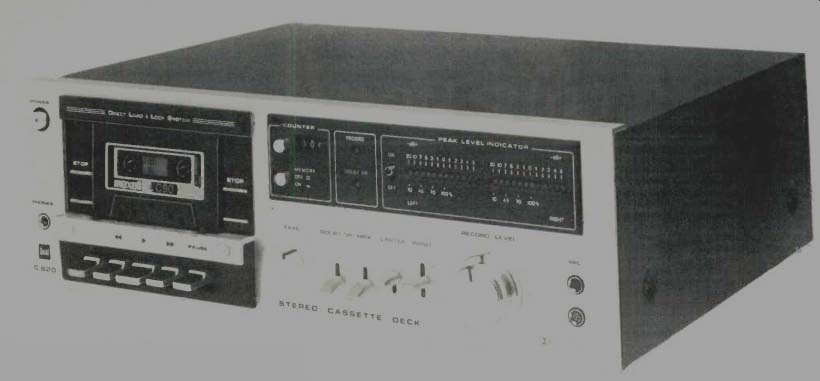
Manufacturer's Specifications
Wow & Flutter: 0.04 percent W rms.
Frequency Response: With metal tape, 20 Hz to 19 kHz; with CrO2 tape, 20 Hz to 17 kHz.
S/N: 64 dB to 67 dB with Dolby NR.
Separation: 40 dB at 1 kHz.
Erasure: 70 dB.
Dimensions: 17 1/4 in. (431.25 mm) W x 14 1/2 in. (362.5 mm) D x 5 1/2 in. (137.5 mm) H.
Price: $419.95.
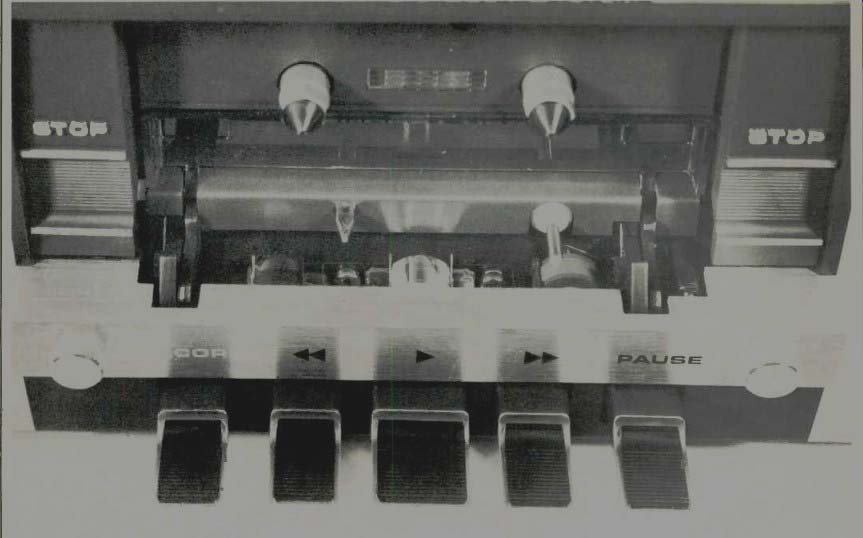
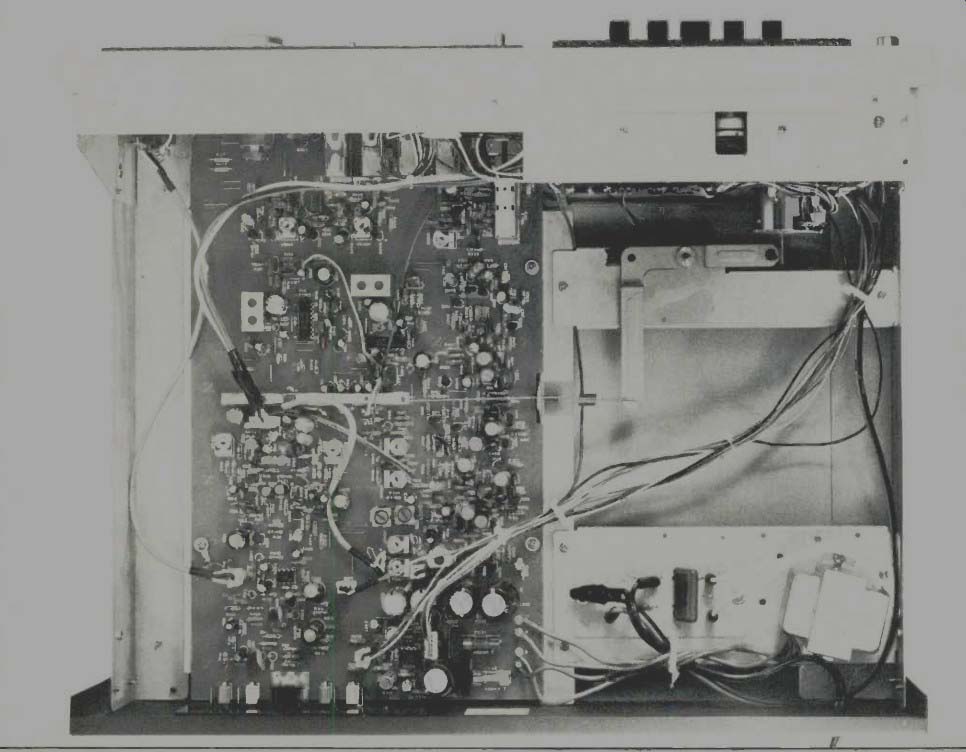
Like other Dual decks, the C 820 uses an array of LEDs for VU indication which are located on a sub-panel op the right hand side. The 0-VU position corresponds to 200 nW/m (the Dolby level), and there are 12 LEDs for each channel--five red ones for +1 to +5 and six green ones calibrated down to-20 dB. Also on this charcoal black panel are a switch to disconnect the display, a digital counter, a memory switch, and indicator lights for Record and Dolby NR. Under the panel is a six-position switch for tape selection (Fe, Fel, Cr, Cr II, FeCr, and Met) plus a group of four lever switches. The first two control the Dolby system with the MPX filter, the third is the limiter switch, and the last controls the input from microphones, line and a DIN socket. Next is a large dual-concentric input control and a pair of standard 1/4-inch micro phone sockets. The on-off switch and phono socket are way over on the left, next to the cassette compartment. And here is where the 820 differs from most other decks: There is no eject button, as the cassette is placed in position and retrieved manually. No matter what the operating mode-including fast wind--the tape can be removed. In addition, the manufacturer has provided a neat cover to protect the heads from dust: When the power switch is depressed the cover opens automatically. Dual calls this system "DLS," Direct Load and Lock, and I must say it works very nicely. An other innovation is the provision of two separate Stop keys, in the form of vertical bars, positioned conveniently on each side of the cassette compartment. The five control keys be low the cassette compartment operate a sophisticated logic circuit that allows fast switching from one mode to another.
An electronic tape-motion sensor stops the tape transport within 1.5 S if a tape should jam. The d.c. motor is servo-controlled with the correction signals obtained from an integral frequency generator; the actual drive system uses twin belts.
Measurements
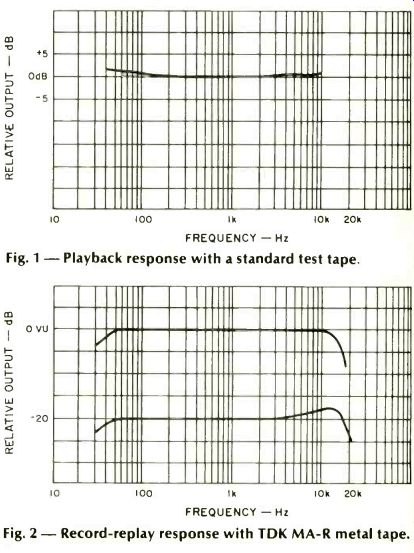
Fig. 1--Playback response with a standard test tape.
Fig. 2--Record-replay response with TDK MA-R metal tape.
Figure 1 shows the playback response from a standard test tape, the output being within 2 dB from 40 Hz to 10 kHz. The first record-replay tests were made with a TDK MA-R metal tape, and the results can be seen in Fig. 2. Note that saturation at 0 VU is exceptionally low and that the response at -20 dB shows a slight rise from around 8 kHz with the -3 dB point at 19.3 kHz. As mentioned earlier, the tape selector has six positions, the Fe for high-energy types and Fel for super high-efficiency kinds. The latter includes Maxell UDXL-I, so this was the one selected for the next test. Figure 3 shows the results: High-frequency saturation at 0 VU (Dolby level) is fairly significant, but the low-level response is quite linear with the-3 dB frequency at 16.5 kHz. Next, a CrO2 type of tape was checked out, a Fuji FX-II, and here the saturation was rather less, with a slightly falling response to a -3 dB point at 16.6 kHz.
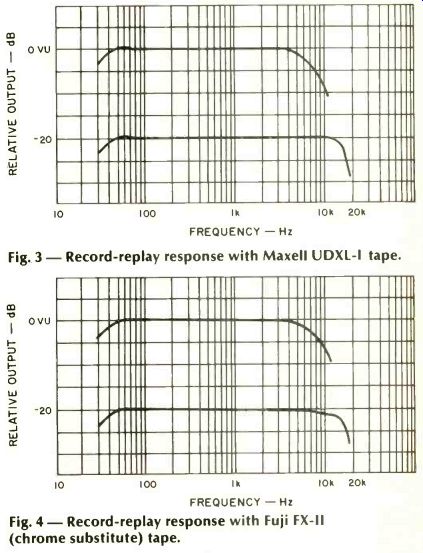
Fig. 3--Record-replay response with Maxell UDXL-I tape.
Fig. 4--Record-replay response with Fuji FX-11 (chrome substitute) tape.
Figure 5 shows the distortion and headroom for all three tapes at 1 kHz, and Fig. 6 shows distortion vs. frequency, measured at a level of-3 dB (ref. 1 kHz). Signal to noise (ref. 3 percent THD) measured 58 dB for the Maxell UDXL-I and 57.5 dB for the FX-II and TDK metal. Switching in the Dolby system increased these results by about 9 dB. Input required for 0 VU was 85 mV line and 0.3 mV for microphones, output then being between 480 and 590 mV. Maximum signal-handling capacity at the microphone inputs was 40 mV. The Dolby system had an error of less than 1.5 dB down to-40 dB, and the MPX filter introduced an attenuation of 30 dB at 19 kHz with a loss of 0.75 dB at 15 kHz and 12 dB at 18 kHz. The limiter had a fast response time, cutting sharply at levels above 0 VU. Erase efficiency was better than 70 dB, as sped fled. Wow and flutter measured 0.04 percent (DIN 45-507), and speed was exactly 1'/8 ips. The fast-wind time for a C-90 cassette was 90 seconds.
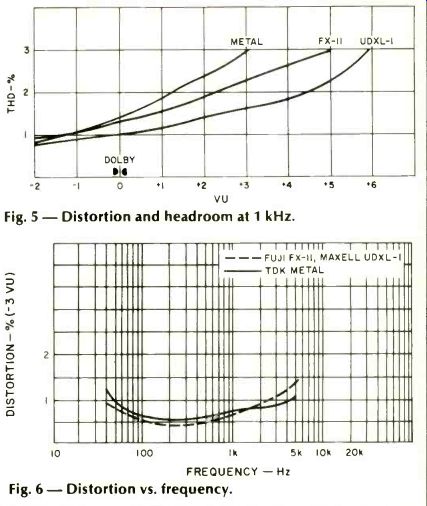
Fig. 5--Distortion and headroom at 1 kHz.

Fig. 6--Distortion vs. frequency.
In-Use Tests
As the test results indicate, the 820 has obviously been designed to take full advantage of metal tapes. Not that "ordinary" tapes are far behind, but the increased high-frequency headroom means a greater margin against overload plus better transient definition. The six-position equalizing facility enables optimum results to be obtained with all the present formulations, including super-chrome. The logic controls all worked nice and smoothly, and I found the twin Stop bars very convenient after I got used to the idea. With this tape control system, it is possible to go from fast forward to fast reverse directly-a severe test, but it can be done without breaking the tape. Amazing when you see just how quickly the speed changes! Opinions differ about LED displays, with some people still preferring the "readability" of VU meters. However, one must admit that the new displays--whether fluorescent or LEDs--are much faster in response and far more accurate in indicating peaks.
Sharp-eyed readers will have noticed that I mentioned a third input from a DIN socket. Sensitivity is quoted at 1 mV, which is much too high for most amplifiers or receivers, but this socket could possibly be used for high-output micro phones.
To sum up, the Dual C 820 deck is a well-designed model offering impressive performance and versatile facilities and is unlikely to be outdated for many years.
-George W. Tillett
(Adapted from: Audio magazine, Sept. 1980)
Also see:
Dual Model C-939 Auto-Reverse Cassette Deck (Equipment Profile, Apr. 1978)
Dual C844 Cassette Deck (Equip. Profile, July 1982)
= = = =